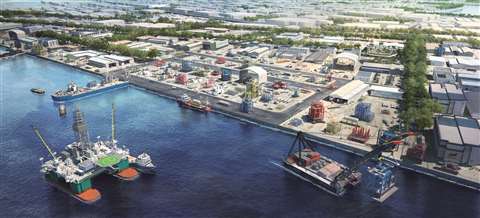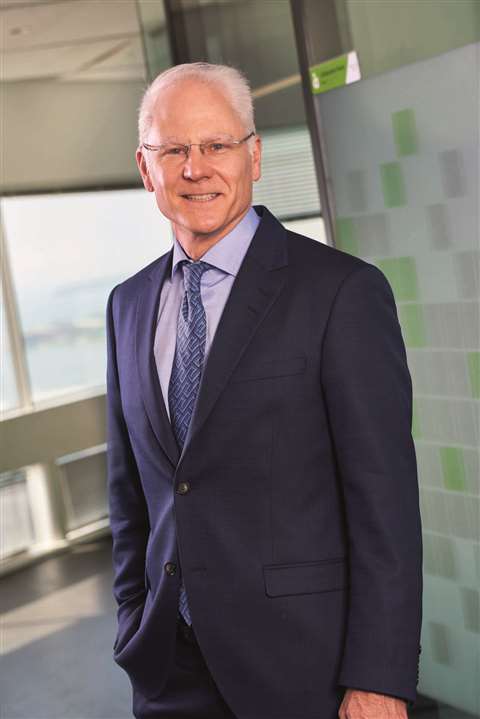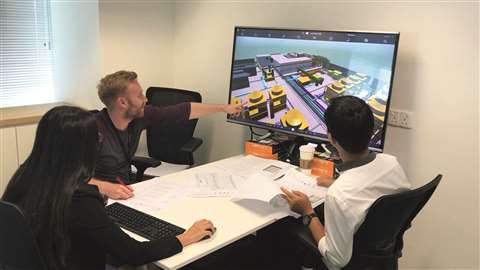Industry interview: Stephane Asselin, Aurecon
21 July 2021
Stephane Asselin, Aurecon’s chief executive for Asia, explains to Andy Brown why new technology can play a key role in the industry’s drive to become even more enivronmentally friendly.
The Asia-Pacific region has experienced strong growth over the past few years and, while Covid-19 impacted different countries in various ways, this part of the world is enjoying strong construction activity.
Asia is a key market for global engineering consutant Aurecon, which was recently appointed lead consultant to work on both the J102 and J109 packages for Singapore’s Jurong Region Line as well as Hong Kong’s Tuen Ma Line Extension.
Stephane Asselin, Aurecon’s chief executive for Asia, spoke exclusively to International Construction about Asia, the company’s approach to new technology, the Covid-19 pandemic and sustainability.
How was the Asia region impacted by the pandemic?
Covid-19 had caused more disruption in some countries than others. The economies of the Philippines, Thailand and Indonesia will take more time and resources to heal than those of Singapore and Hong Kong.
 Aurecon will design a shared facility in Singapore to support offshore module and equipment fabrication activities
Aurecon will design a shared facility in Singapore to support offshore module and equipment fabrication activities
We moved towards two-speed recovery plans at Aurecon. We took stock in markets like Thailand, where projects came to a halt or were delayed. There has been an acceleration in projects in Hong Kong.
We recognised that calibration for each market was necessary, and that the digital technologies we had been investing in had to be harnessed now more than ever to support remote working.
Asia is an extremely resilient region. In my 20-plus years here, I have witnessed countries battered – by natural disasters, financial crises and SARS (which affected several countries in 2003) – and overcome these.
Will Covid-19 have a long-term impact on construction?
There are definitely some trends we have seen. As engineers, we are used to modelling the behaviour of buildings over their lifetimes and the flow of people through them. But it is interesting to see how client thinking is shifting to incorporate a wider range of scenarios, such as the ongoing need for social distancing.
Many new developments are taking a design approach that has social distancing, screening areas and contactless technologies as a given, rather than as an option. For this type of work, the use of Digital Twins [an Internet of Things (IoT) platform that enables you to create a digital representation of real-world things, places, business processes and people] is perfect. We have been strengthening our capabilities, having already built this into our offering.
 Stephane Asselin, Aurecon Asia’s chief executive, calls the development of digital solutions “essential”
Stephane Asselin, Aurecon Asia’s chief executive, calls the development of digital solutions “essential”
Existing developments are using design modelling to look at a variety of options for moving people through their buildings in different ways, should there be upward or downward changes in requirements for the number of people taking a particular route. This has been particularly seen in airports.
Elsewhere, other technologies that were already emerging have been fast-tracked. For example, the use of drones on site is not new but we are seeing more uptake in projects. In addition to the surveying and progress reporting that these tools were originally proposed for, they are also used to track workers and monitor social distancing.
What do you prediction for the region’s construction outlook?
The trend in the long-term remains very favourable for this part of the world. Asia is second to none when it comes to infrastructure, with nearly US$26 trillion expected to be invested between 2016 and 2030.
We have also observed that there are more stimulus budgets put in place off the back of the pandemic, which is going to be good for the industry too.
With such a large population in Southeast Asia, and mainland China too, there will be lots of development work to be done. Sectors such as the smart cities development, data centres, infrastructure, energy, water and more are all going to be busy in the coming years.
What are the biggest construction trends in the region?
Firstly, developing economies in Asia will need to increase investments in healthcare and public health infrastructure. Without proper public health infrastructure such as clean water and sanitation, developing economies will remain vulnerable to Covid-19 and other such outbreaks. A country’s readiness to cope with epidemics is directly correlated with its quality of infrastructure.
In terms of urbanisation, this is both a big opportunity and challenge. UN projections suggest urbanisation and population growth added 2.5 billion people to the world’s cities by the end of 2020, with 90% of that happening in Asia and Africa. This presents huge economic opportunities for Asia. But, at the same time, creating an efficient transport network, connected buildings, clean water and sustainable developments that facilitate that economic growth requires an innovative and future-focused engineering approach.
How is Aurecon using new technology?
It is essential to develop digital solutions, tools, and expertise to improve whole of life performance on every project we deliver with clients. We are continually exploring how to integrate new technologies into the way we practice engineering and design.
 The development of digital technologies will make the construction industry more efficient
The development of digital technologies will make the construction industry more efficient
We established our Regional Centre of Excellence for Digital Engineering in Vietnam. The centre is designed to accelerate the development and adoption of digital engineering in Asia in construction with close collaboration from our experts in Singapore, Hong Kong and Thailand.
We are already tapping into tools such as Artificial Intelligence, data analytics and the Internet of Things to visualise clients’ projects at a new level.
One good example is the use of Digital Twins to analyse the performance of a development over its lifecycle, examining the long-term operational maintenance.
Sustainability is a mega trend. Is this something that customers and clients are increasingly expecting?
Asia-Pacific is one of the most vulnerable regions to climate change, and the impacts of it are projected to become more intense in the future. Across Southeast Asia we are seeing increasing numbers of governments and industries embracing mitigation and adaptation measures.
Aurecon has been involved in many projects that are part of this trend, such as the largest multi-microgrid test and research platform in Southeast Asia and Southeast Asia’s largest solar power plant of Dau Tieng 1 and 2.
A crucial part of delivering future-proofed infrastructure is harnessing the power of digital technologies. We are now able to model the impact on developments of changes in air and seawater temperatures, rainfall inundation or sea level rise. We are also building digital decision systems that utilise various layers of climate, building, infrastructure, economic and spatial data to help building owners and users make better choices.
As engineers we cannot change the strength of a typhoon. But by creating resilient infrastructure that harnesses data and digital technologies we can change the way countries, regions and people withstand and recover from it.
STAY CONNECTED



Receive the information you need when you need it through our world-leading magazines, newsletters and daily briefings.
CONNECT WITH THE TEAM








